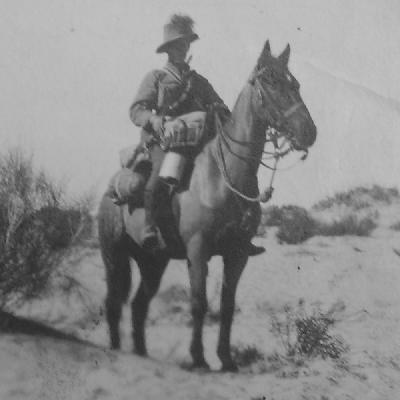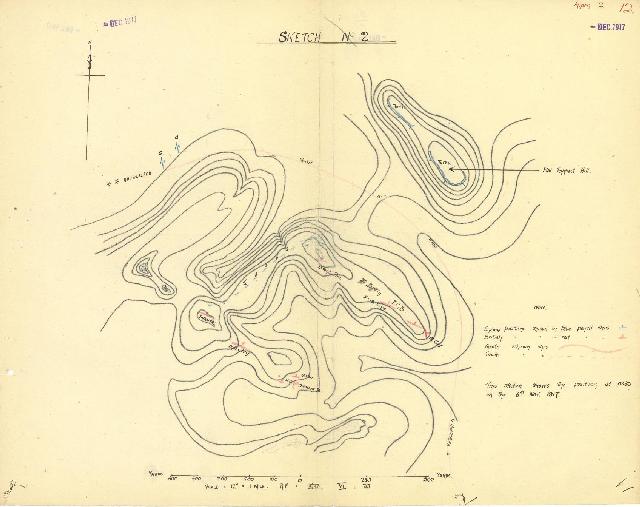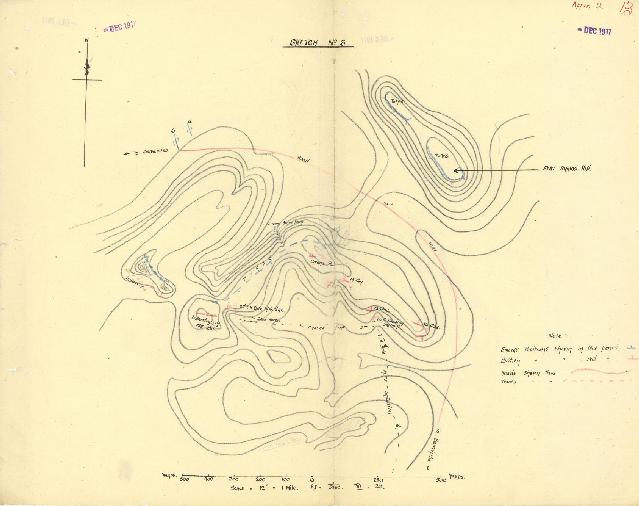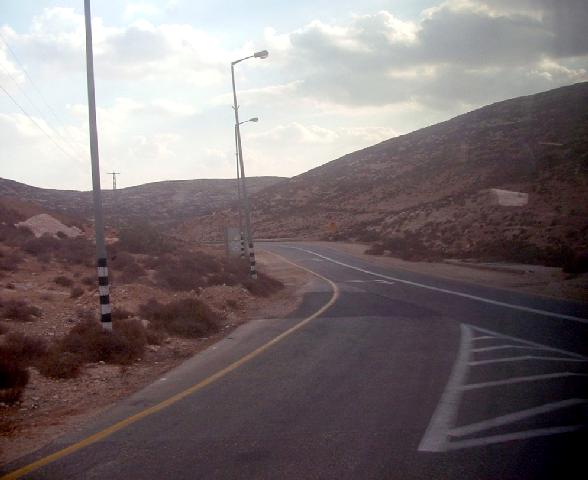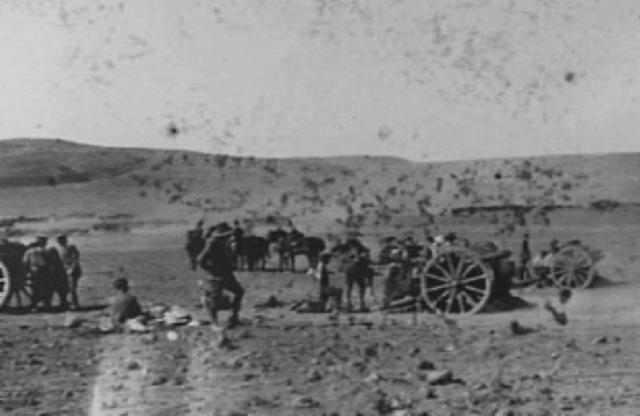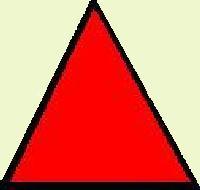Topic: BatzP - Khuweilfe
The Battle of Khuweilfe
Palestine, 1 - 8 November 1917
Baly Account
The following is extracted from the book written by Lindsay Baly called Horseman, Pass By, Chapter 13, Khuweilfe barrier and Kauwukah breakthrough.
Unknown to the British, the Turkish Army was in disarray owing to divided counsels, uncertainty in its aims and irresolution in its actions. Rations, clothing and munitions were not flowing and a chronic haemorrhaging of deserters wasted the front line. The German General von Falkenhayn, in Fall's estimation one of the greatest soldiers of the war, was at dangerous odds with Djemal Pasha, the tempestuous Turkish Commander-in-Chief who resented German interference. In his eyes, they were to provide technical assistance in aircraft, gunnery, transport and communications and no more, and he made an ostentatious point of ignoring German strategic advice. Djemal ran Palestine like a despotic potentate and sybarite of old, and a Turkish major general remarked to the German von Kressenstein, 'Now we shall go hungry because Djemal will have no interest in feeding us'.
In spite of all this the Turkish Army after Beersheba summoned a creditable defence. There was less throwing down of arms and begging for mercy and more of the dogged rifleman who, having dug a trench to his liking was not about to give it up.
The effect of this resistance on the British plan was that the envisaged 'rolling up' of the Turkish left flank from Beersheba towards Gaza by the mounted men did not take place. Instead, there was a series of chequerboard actions for the next week around Tel el Khuweilfe, a Turkish strongpoint with good water ten miles north of Beersheba. What influenced von Falkenhayn to fight here was the seizure of some high ground overlooking the Hebron road by Arab irregulars under a British officer. Falkenhayn was convinced they were Chauvel's advance guard and deployed six Turkish battalions against them. The Arabs fought well and their eventual surrender was dearly bought.
The British then had to tackle the enemy who still held Khuweilfe. This was rough, dry country and the summer lingered on with intense heat and a three-day khamsin. There was no water to be had beyond Beersheba and the infantrymen, Yeomanry and Light Horse had to march and fight on one water bottle in 36 hours, and the horses on nothing - they would not eat past the early stages of thirst - until they could be brought out of action and back to Beersheba, twelve to fifteen miles away.
Tel el Khuweilfe commanded the country to both west and east, and would therefore menace the British infantry and mounted troops when they struck at the Hareira and Nejile redoubts in the rolling-up process. On the other hand, its capture by the British would leave the Turkish left flank in the air.
The 8th Mounted Brigade of Sherwood Rangers and South Notts Hussars and the 8th Light Horse Regiment (which was under the mistaken impression it would be deployed for only one day and did not draw rations) advanced directly up the valley to three miles below the enemy stronghold.
Brigadier General JT Wigan considered a bold frontal attack offered the best chance of success and sent a squadron of the 8th Light Horse at it at the gallop. The squadron got to within 800 yards before it was forced into cover on its left by heavy fire. It was later joined by the rest of the 8th Regiment. After nightfall, Wigan endeavoured to link up the Yeomanry regiments with the Light Horse, but the Sherwoods could not go forward.
All night the 8th was under heavy machine-gun and rifle fire, but with good cover in the rocks, suffered little. At dawn, the enemy was discovered in strength much closer, within 200 to 300 yards of the Australians, who had now been 24 hours without food and had exhausted their water on the previous day
The commitment expanded. The 53rd Infantry Division and Cox's 1st Light Horse Brigade advanced on the feature and Cox's 1st Regiment seized a ridge on its right, but there they were pinned down and isolated all day, suffering heavy casualties. Many officers were killed and one squadron was left with a sergeant in command. The Turks deliberately fired on ambulance cans sent in to collect the 1st's wounded in a gross breach of their previously honoured convention. A Turkish prisoner said this was at the instigation of Germans, who claimed the ambulance carts would be carrying ammunition.
Soon after the 1st Regiment's advance, Brigadier General 'Fighting Charlie' Cox took over the forward area, including the ridge called Ras el Nagb, from the Yeomanry and the 8th Light Horse came under his command. The Yeomanry were withdrawn but Cox ordered the 8th to hold on at all costs. The 8th endured and fought back until their ammunition was exhausted.
At 11 am the enemy launched a rare counterattack, but Cox dispersed it with the 2nd and 3rd Regiments. In two hours, fresh British regiments began to arrive and the 5th Mounted took over at Ras el Nagb. Elements of the 53rd Division marched up from the south-west and at 4 PM the British took over the whole line.
These rotations, a trial in themselves, where necessary for men and horses to be watered at Beersheba. The long-suffering 8th Light Horse arrived at Beersheba at 10 PM and their desperate horses heaved and struggled for the water troughs and their first drink in 39 hours. Many men drank too much, suffering the consequences of severe diarrhoea.
During the action at Khuweilfe, Ryrie's 2nd Brigade was vainly trying to break through from the east. The country was just as strewn with rocks and ridges over which men and horses could only pick their way and the Turks, on higher ground, had the advantage. Over two days, Ryrie tried three times to turn the Turks' flank, but the terrain, lack of water, shortage of supplies and ammunition, and constant enemy shell fire in which time after time the led horses were searched out and fired on, indicating Bedouin cooperation with enemy artillery, all conspired to frustrate the brigade. The truth was, it was being worked to exhaustion. Recognising this, Chauvel intervened to say the main object should be to guard the flank rather than advance and that Ryrie should just hold the line. The last of some rain puddles from an October thunderstorm dried out and Ryrie had to march back to Beersheba after a most strenuous and frustrating operation.
In the centre, on 6 November, Chetwode was to assault the Kauwukah Trench System, a typically labyrinthine Turkish gallery protecting the Hareira and Sheria redoubts, with three divisions of infantry. This plan also provided for the 53rd Division to capture Khuweilfe simultaneously.
The New Zealand Brigade had relieved the 1st Light Horse Brigade at Khuweilfe just as 2000 Turks attacked the Yeomanry on Ras el Nagb. The Yeomanry held them off until nightfall, when they were relieved by the Canterbury Regiment. The New Zealanders' orders were to hold their ground while the 53rd Division attacked Khuweilfe from the south-west again. The 53rd had suffered much for no gain, except to serve and to augment the flow of Turks from Gaza to the Beersheba operation.
A quiet night of the 5th ended with two hours of Turkish bombardment and an advance against the Canterburys at dawn. The Wellingtons went to their support, the enemy was stopped and there was no further action that day But in the evening, the NZ Brigade had to return to Beersheba for water: they had been unable to complete watering before setting out, owing to congestion and insufficient flow at Abraham's Wells.
The Camel Brigade took over their line, less its 3rd Battalion (Australian), temporarily attached to the 53rd Division. Its task was to follow close in rear of the 53rd's advance and occupy Khuweilfe's commanding hill once it was captured.
The 158th Brigade of the 53rd Division set off before dawn on the 6th, unfortunately short of one battalion that had not arrived in time. The Hereford Battalion was ordered to close this gap in the line, but in attempting this movement they lost direction and turned a full circle to the left. The Camel Battalion, which had been following the Herefords, kept to the line of march and with daylight found themselves in utter isolation, with Tel el Khuweilfe looming ominously ahead. To Lieutenant Colonel N. de Lancey Forth's alarm, the Camels would obviously attract annihilating fire and he moved to cover behind a spur just as the Turks swept the open ground with machine-guns. At the same time, some 200 of the Herefords in the open were targeted: they lost all their officers and fell back in confusion on the left of the Camels, in the process abandoning to the enemy part of the ridge behind which the Australians sheltered. It was clear that unless the Herefords held that part of the ridge, the Camels would have to retreat from their part. Lieutenant E.W Dixon with about 30 men rushed to meet the retreating infantry and, waving his hat, stemmed the confusion and turned them under heavy fire back onto the ridge, where they then held steadfastly. Later in the day, they repulsed a Turkish attempt to envelop them, at the same time saving the Camels from encirclement and likely disaster.
But from every approach, the Camels were still taking shrapnel, machine-gun and rifle fire and Forth asked for assistance. His official report says: 'At about 10 o'clock, representations were made by the 3rd Battalion to the General Officer Commanding the 158th Brigade for the infantry to come up and drive the Turks off the ridge ... to the left rear, and over which the infantry held commanding ground. This, for reasons unknown, they were not ordered to do; but the 2nd Light Horse Brigade's machine-gun squadron were ordered to gallop up a little valley commanded by the Turks ... They charged in a very gallant manner and at once came under murderous machine-gun and shrapnel fire, but ... led by Captain Cain, reached their objective ... They rushed their guns up the hill within forty yards of the Turks, and, although the teams were shot down almost to a man, their very gallant action caused the Turks to pause and gave the 3rd Battalion breathing time to size up their position.'
The machine-gun squadron maintained their precarious hold and their fire, along with the Camel Battalion's, all through the day, repelling repeated Turkish counterattacks that threatened to sweep them, and the 53rd Division's leading elements beside them, off their ground.
Shortly before dawn on the 7th, the machine-gunners were withdrawn, but the fire fights resumed with daylight, Turkish close-range sniping especially taking a severe toll. The action was deadlocked, with the Camels and 53rd units unable to move, and the Turks held at bay At 3 PM, accurate artillery fire was brought to the support of the 53rd, enabling a general advance to be mounted towards evening. All troops had been marching and fighting for over 36 hours, but summoned their last reserves to attack determinedly. The Camels rushed the slopes of Khuweilfe with bayonets and hand grenades, and after brief resistance the Turks fled the grim mound. The 53rd went forward until darkness checked them. The night was tense but quiet, and in the morning it was found that the Turks, whose front had been comprehensively breached by Chetwode at Kauwukah, had abandoned all the Khuweilfe fortifications.
Khuweilfe was a piecemeal, reactive action. It seemed small scale, undeserving of proper plans and systematic reduction, yet the pinprick became a consuming canker that wore down and mauled three divisions for six days. Beersheba, from the time Brigadier General Grant got his orders to the fall of the town, took less than an hour.
The Khuweilfe operations dashed Allenby's hope of an early breakthrough and pursuit, yet in the sense that it did draw the enemy away from Gaza in strength, it contributed very much to victory. And despite the lack of an overall operational plan, no theorist has yet conjured any one that would have served well.
In the final action, the 53rd Division suffered the heaviest pro rata casualties. The 3rd Camel Battalion lost 22 men killed and 54 wounded, and Captain Cain's machine-gun squadron eight men killed and nineteen wounded.
Further Reading:
The Battle of Khuweilfe, Palestine, 1 - 8 November 1917
The Battle of Khuweilfe, Palestine, 1 - 8 November 1917, Roll of Honour
The Third Battle of Gaza, Palestine, 26 October 1917 - 2 January 1918
Battles where Australians fought, 1899-1920
Citation: The Battle of Khuweilfe, Palestine, 1 - 8 November 1917, Baly Account




